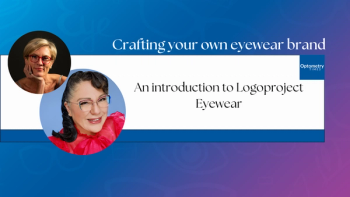
Hypotension: The second modifiable risk factor in glaucoma
According to the Ocular Hypertension Treatment Study, 5 risk factors are associated with high or low risk for primary open-angle glaucoma (POAG), with the intraocular pressure (IOP) historically being the “gold standard” and only modifiable risk factor.
Blood pressure (BP) can sometimes be a modifiable risk factor for glaucoma, Ruth Williams, MD, a glaucoma consultant and President Emeritus of the Wheaton Eye Clinic, Wheaton, Il., reported at the 8th annual Optometric Glaucoma Symposium in San Francisco.
According to the Ocular Hypertension Treatment Study,1 5 risk factors are associated with high or low risk for primary open-angle glaucoma (POAG), with the intraocular pressure (IOP) historically being the “gold standard” and only modifiable risk factor. The others are age, a thin central corneal thickness, a larger cup to disc ratio, and a higher baseline pattern standard deviation, the last of which is likely not a good predictor in clinical practice.
Other risk factors for POAG are genetics, myopia, smoking, sleep apnea, and coffee. Diabetes and systemic hypertension may be risk factors for POAG, but the results among studies are not definitive. Regarding normal tension glaucoma, the risks include migraine, Raynauds syndrome, and low blood pressure (BP).
There is good evidence from multiple population-based studies for physicians to consider low BP and low ocular perfusion pressure (OPP), defined as 2/3 (mean arterial pressure – IOP), in which there may be inadequate blood flow to tissues, as risk factors for POAG, in that a lower diastolic BP was associated with a 2 to 6 times higher risk of POAG developing. “A strong association has been seen between low OPP and the incidence/prevalence of OAG,” she commented.
A large population study3 showed that a lower mean arterial pressure, defined as the diastolic BP + 1/3 (systolic BF-diastolic BP), and lower diastolic arterial pressure led to faster rates of loss of the retinal nerve fiber layer in patients with similar IOPs, suggesting that the levels of systemic BP may be a significant factor in glaucoma progression.
A recent study2 showed that of 20,815 patients analyzed, 462 developed POAG. This study implicated vascular dysregulation as a potential cause of OAG, and that the BP medications did not stop POAG development.
References
Gordon MO, Beiser JA, Brandt JD, et al. The Ocular Hypertension Treatment Study: baseline factors that predict the onset of primary open-angle glaucoma. Arch Ophthalmol. 2002;120:714-20.
Jammal AA, Berchuck SI, Mariottoni EB, et al. Blood pressure and glaucomatous progression in a large clinical population. Ophthalmology. 2022;129:161-70. doi: 10.1016/j.ophtha.2021.08.021.
Lee EB, Hu W, Singh K, Wang SY. The association among blood pressure, blood pressure medications, and glaucoma in a nationwide electronic health records database. Ophthalmology. 2022;129:276-84.
Newsletter
Want more insights like this? Subscribe to Optometry Times and get clinical pearls and practice tips delivered straight to your inbox.
















































.png)


